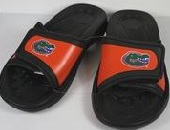When the CFA Society Toronto decides to hold an ETFs seminar in Toronto’s Hockey Hall of Fame, such as it did on the balmy evening of Sept 13, 2012, there is a competition for attention. The venue is full of items of interest to the die-hard fan, such as the shower sandals used by Alexander Ovechkin during the 2011 All-Star game. The lesser fan might stand there, equally transfixed, wondering what the secondary market for used shower sandals could be, even those of Alexander Ovechkin.
The ETFs seminar had panel discussions covering three areas: market making, liquidity and trading; utilizing Bloomberg to analyze and evaluate ETFs; and tactical ETF asset allocation, specifically liquidity considerations.
The Bloomberg section was highly informative for analysts getting used to the ETFs information feed. Constantin Cosereanu, Equity Specialist, Bloomberg, clicked us through several features of the Bloomberg ETF module. It’s got a whole new Appropriations section which will show at a glance whether a given ETF has leverage, is actively managed, swap-based, derivatives-based, etc. Another nice feature is the “basket liquidity” which will show how many shares of a given ETF can be added before affecting liquidity. The section of screen called “Top 10 Least Liquid” even shows the estimated approximate time it would take to liquidate a selected ETF.
“ETFs options are key markets for retail and institutional investors,” said Emmanuel Baror, Equity Derivatives Applications Specialist, Bloomberg. He delivered a short segment on ETF options. Options liquidity is concentrated in the top 50-75 ETFs. The EQS command will call up a Bloomberg screen, and the command VCA will show the volatility and coefficient analysis. It contrasts current implied volatility against the average volatility.
Baror explored two ETFs strategies in greater detail in order to highlight other Bloomberg commands. Ah, the power of a worked example. The first was call overwriting, and for this he chose the GDX gold index. A command of BXY INDEX GP displayed a graph of SPX vs BXY indices. The second strategy Baror showed was hedging at the sector level. Time did not permit him to go into other ETF strategies such as global, cross asset, or sector volatility pairs. Nor could he go into the VXX and leveraged ETFs, although he said they had become “very popular in the States.”
After Bloomberg had wowed the crowd with the latest features for information on ETFs, the last panel spoke about tactical ETF asset allocation, especially liquidity considerations.
Pat Chiefalo, from National Bank Financial, said that his bank is increasingly advising a growing number of institutional clients on ETF analysis and recommendations for exposures on specific geography, asset class, and sector. This includes asking market-makers for liquidity profiles and bid-ask spreads as part of their liquidity analysis.
Marty Gillespie, from RBC Capital Markets, said that “secondary market liquidity is a big piece of the puzzle.” The index an ETF is based on is key to driving its behaviour, he noted.
Jeremy B. Beck, from Nottingham Advisors, said that his firm specializes only in ETFs. Nottingham has been specializing in ETFs so long that “the posted five-year returns for a fund are not based on a model—they are the real returns.” Beck delivered arguably the most memorable segment of the evening. He related an event that occurred before there were fancy Bloomberg features for keeping track of ETFs, which, to the assembled crowd, was the narrative equivalent of saying, “once upon a time.” “Timber became a hot commodity in 2006, because it combined a real estate with a commodity play.” It was one thing to deal with an asset class, but another thing to become the biggest fish in the pond. When the market began to sour in 2007, Nottingham suddenly become the world’s largest holder of timber ETFs. They found themselves illiquid in a large position. After some very long days, the illiquidity was resolved, and everything turned out well. The moral of the story, he said, is to consider the ETF provider “as a support if you need help unwinding. There are market makers out there who are deconstructing markets very efficiently.”
Which brought us back to wondering about the liquidity of secondary markets for certain hockey memorabilia. ª

